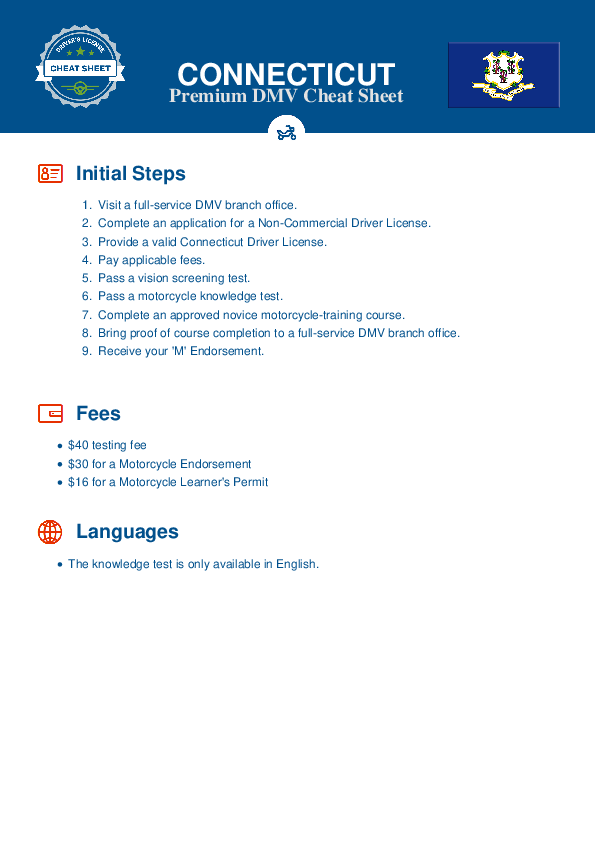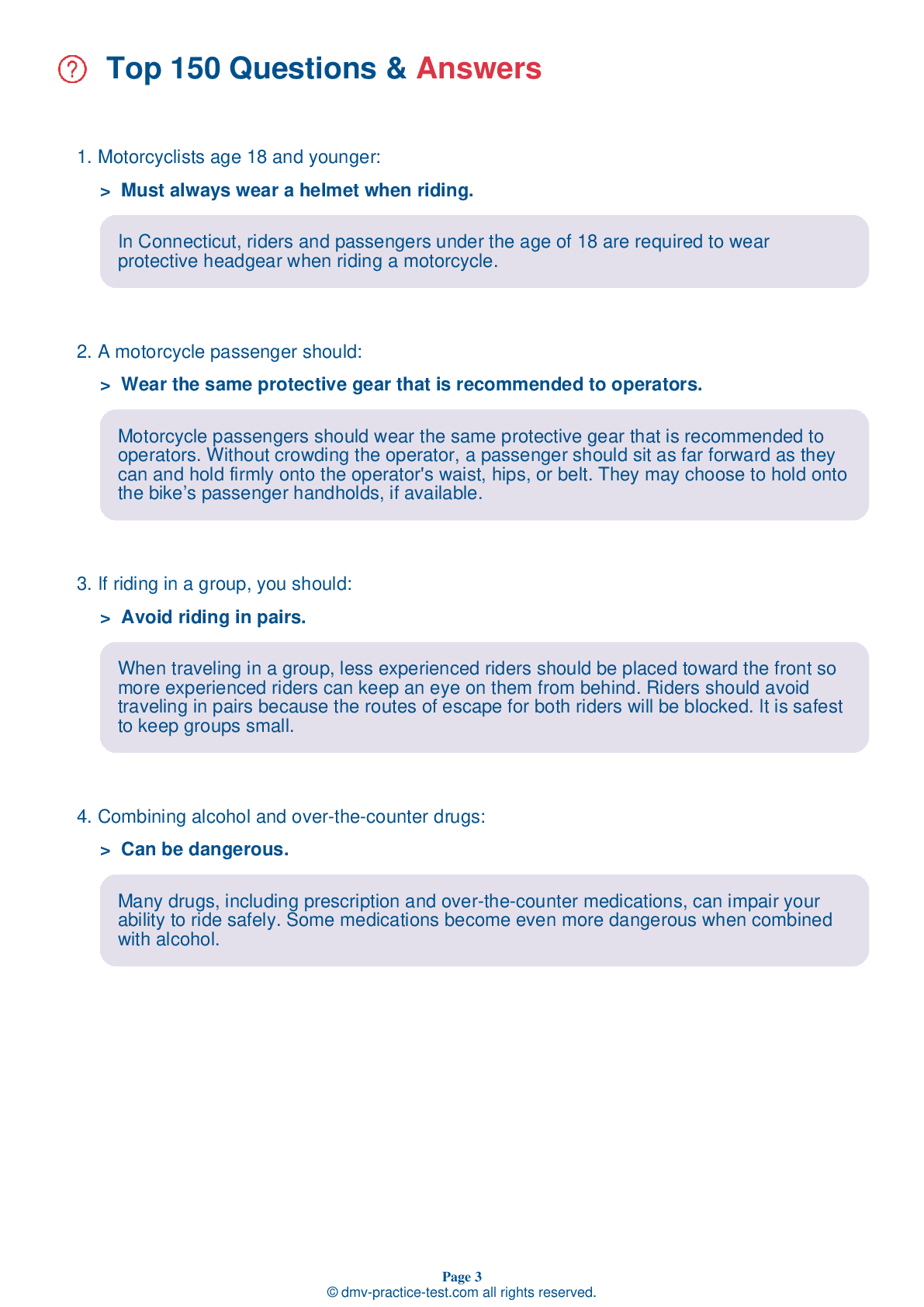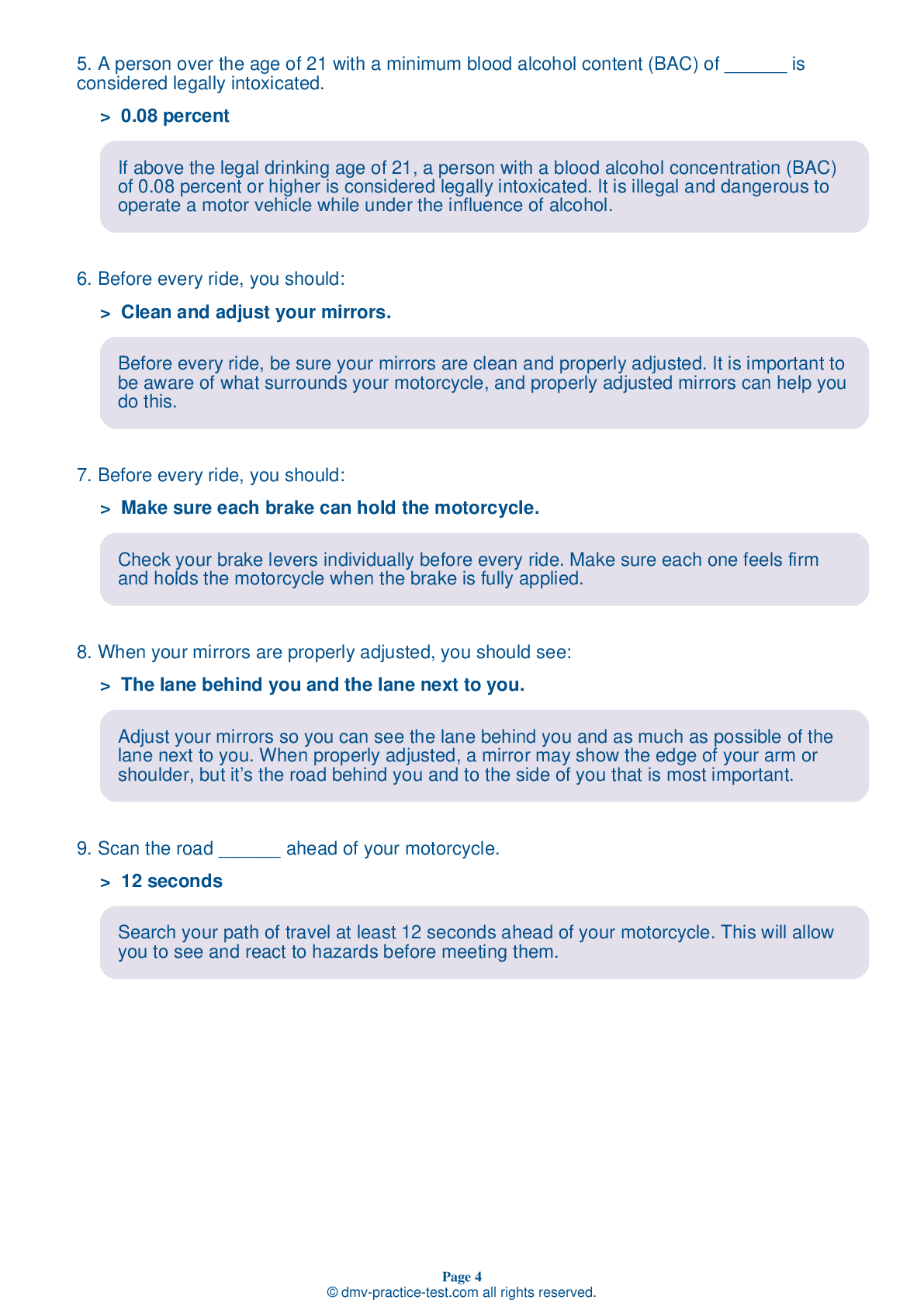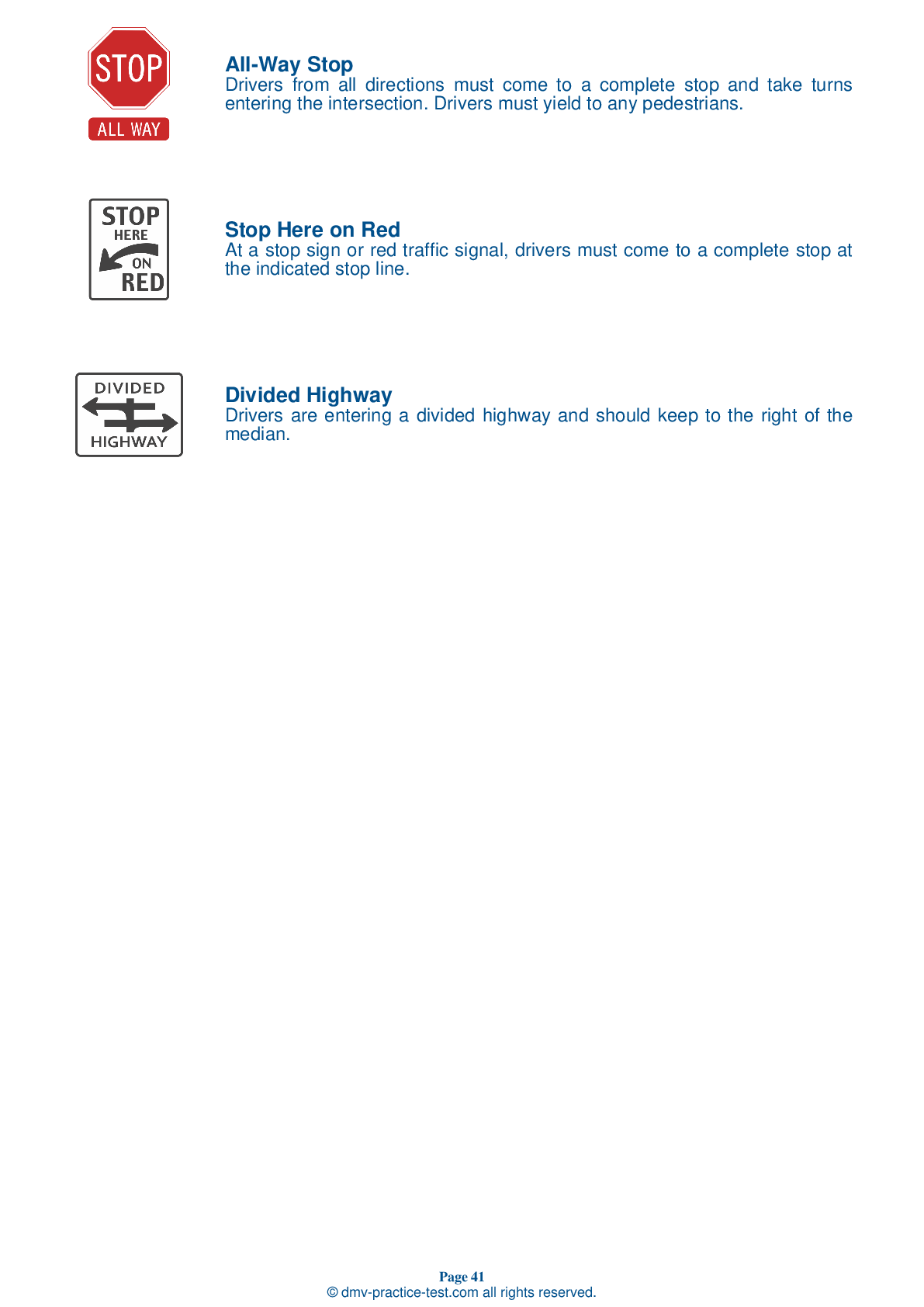Motorcycle Test | License CT 2025 | FREE Online Practice! #4 Page 3 of 3
Take this FREE motorcycle test (license in CT 2025) to check your knowledge of the road rules. To improve your results, download a motorcycle handbook online, study theory, and practice for free on our website. Still worried about how to get a motorcycle license in Connecticut in 2025? Check our website for more sample tests, train as much as possible, and boost your grades!
11 . In general, when parked on the road, a motorcycle should be:
If parking in a parallel parking space next to a curb, it is generally best to position the motorcycle at an angle with the rear wheel to the curb. It should be noted that some cities have ordinances that require motorcycles to be parked parallel to the curb.
12 . Head checks should be done:
Frequent head checks should be a part of your normal scanning routine. Only by knowing what is happening all around you can you be prepared to deal with your surroundings.
13 . When entering a highway while riding in a group, riders should:
While it is generally best for groups to ride in a staggered formation, riders should shift into a single-file formation when going through a curve, making a turn, entering a highway, or exiting a highway.
14 . If riding in a group, you should:
When traveling in a group, less experienced riders should be placed toward the front so more experienced riders can keep an eye on them from behind. Riders should avoid traveling in pairs because the routes of escape for both riders will be blocked. It is safest to keep groups small.
15 . Scan the road ______ ahead of your motorcycle.
Search your path of travel at least 12 seconds ahead of your motorcycle. This will allow you to see and react to hazards before meeting them.
16 . Combining alcohol and over-the-counter drugs:
Many drugs, including prescription and over-the-counter medications, can impair your ability to ride safely. Some medications become even more dangerous when combined with alcohol.
See the exact questions that will be on the 2025 Connecticut DMV exam.
99.2% of people who use the cheat sheet pass the FIRST TIME
Jeneen was tired of paying $5/gallon. She got herself a scooter that required the motorcycle license. She studyed the motorcycle test cheat sheet and passed her test the next day!
Christopher tells us how he knew nothing prior to obtaining the motorcycle study guide, and he only got one question wrong because he clicked on the wrong answer by mistake.



